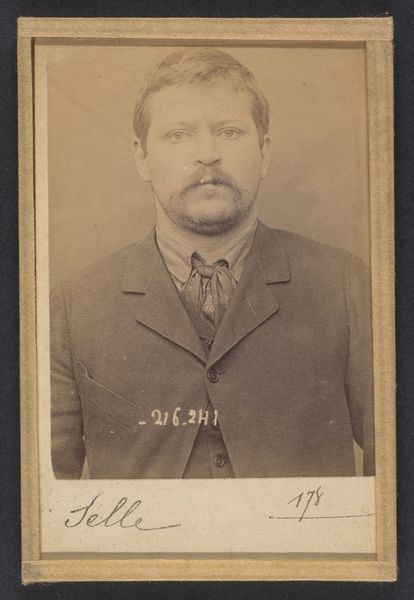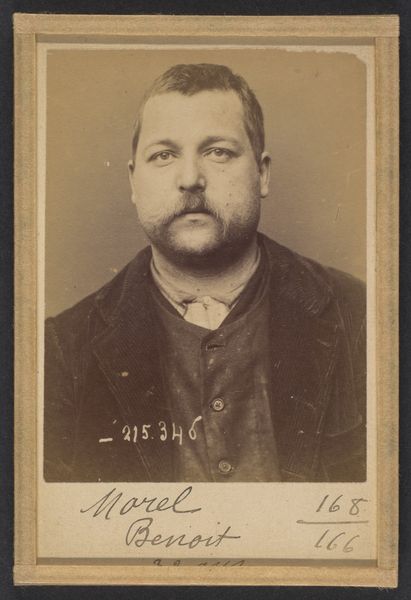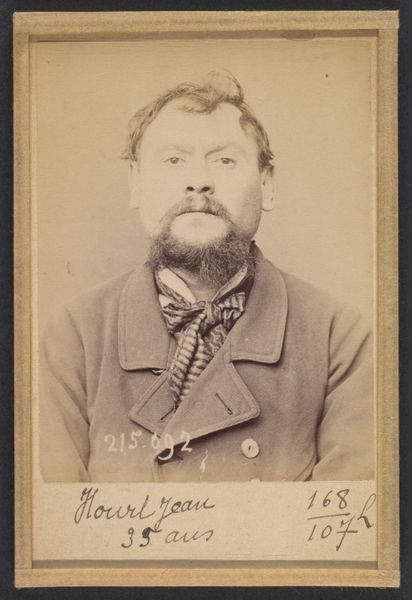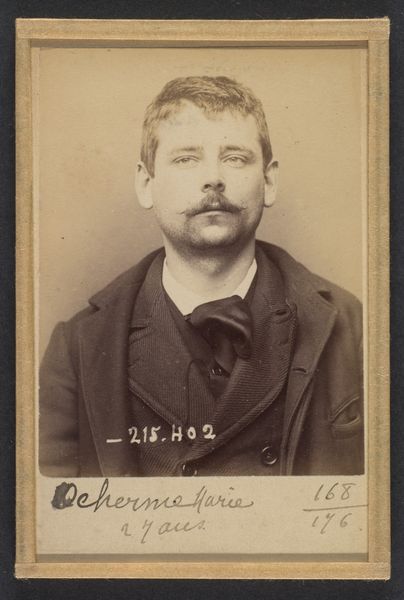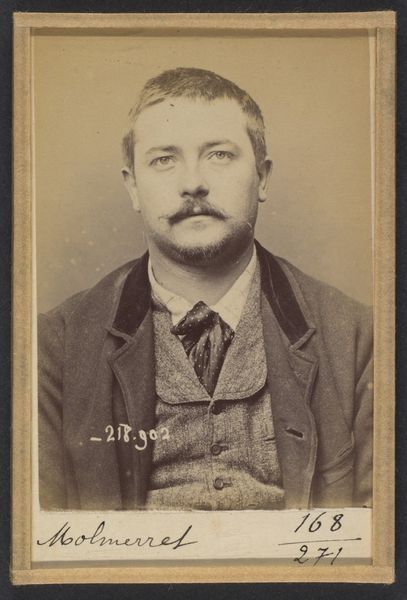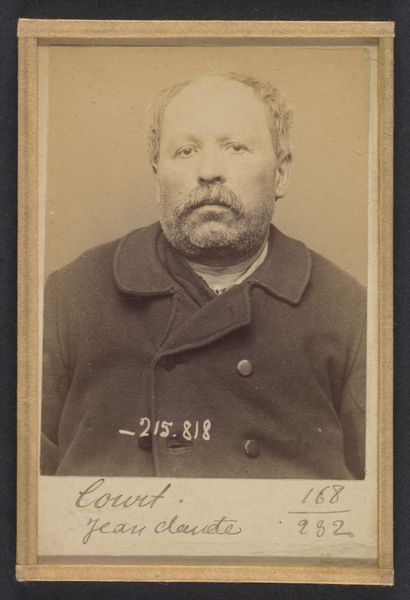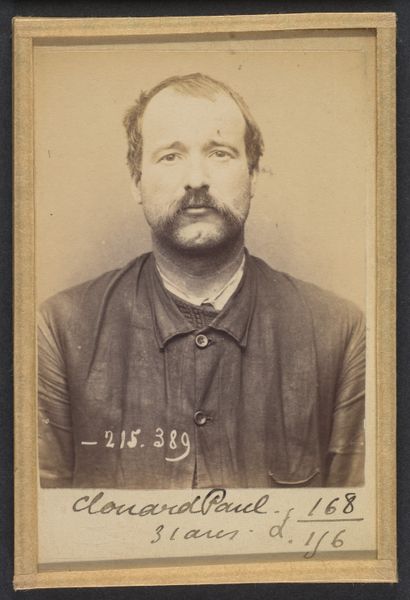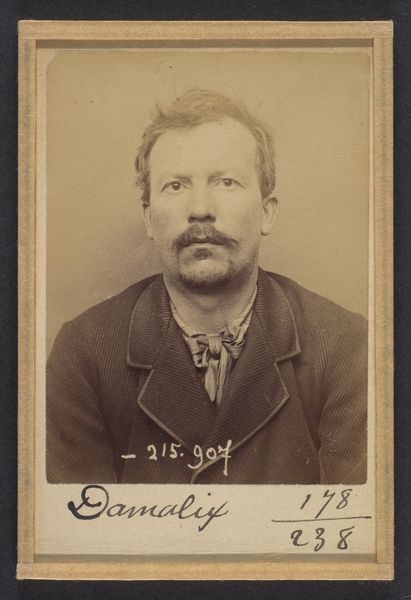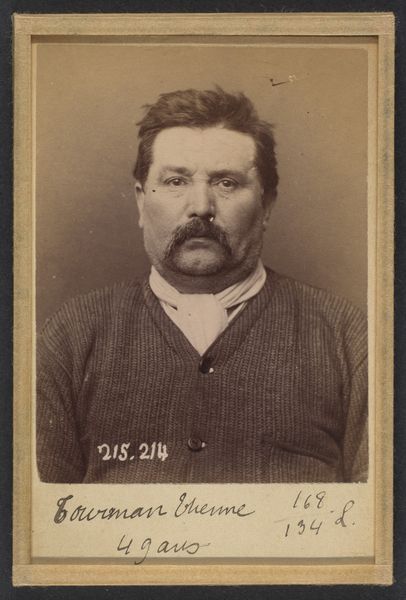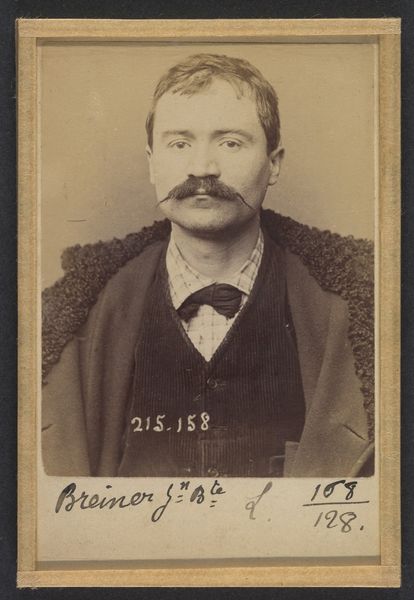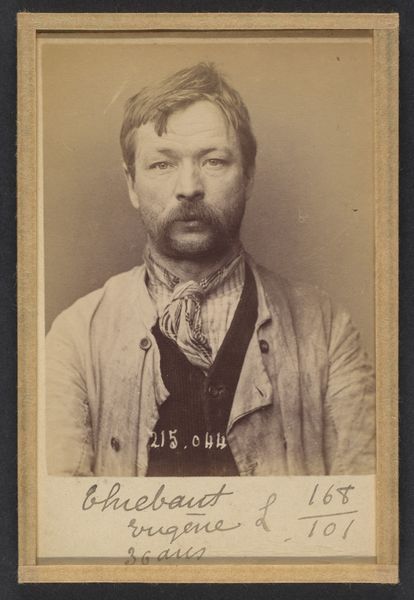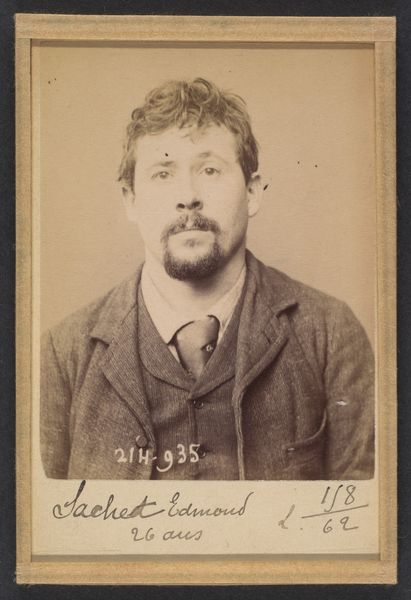
Arnaud. Eugène. 47 ans, né à Villeveyrac (Hérault). Ferblantier. Anarchiste. 20/3/94. 1894
0:00
0:00
photography, albumen-print
#
portrait
#
african-art
#
photography
#
historical photography
#
19th century
#
men
#
albumen-print
#
realism
Dimensions: 10.5 x 7 x 0.5 cm (4 1/8 x 2 3/4 x 3/16 in.) each
Copyright: Public Domain
Curator: This is an albumen print from 1894 by Alphonse Bertillon titled "Arnaud. Eugène. 47 ans, né à Villeveyrac (Hérault). Ferblantier. Anarchiste. 20/3/94." Part of a series of mugshots, it depicts a man identified as Arnaud, an anarchist. Editor: There’s a weariness in his gaze, even defiance. He doesn't meet the camera's eye, creating an unsettling sense of looking at a man caught between worlds, caught between states. Curator: Bertillon's portraits were part of a broader system of criminal identification, a precursor to modern biometrics. The details provided—age, place of birth, occupation, political affiliation, date—reduced him to a set of data points. Editor: The date and other numeric notations inscribed beneath the photo add to that dehumanization. Yet, within this very reduction, there is a powerful symbolism. The very act of documenting aims to control and categorize dissent, a theme we still wrestle with today. Curator: Precisely. The photograph becomes a symbol of state power, but also the individual's struggle against that power. It prompts questions of how we, as a society, treat those deemed "other," particularly within systems of justice and social control. Anarchists were feared in fin-de-siècle France, becoming targets of legislation to restrain them. Editor: I'm also struck by the composition. The choice to position Arnaud slightly off-center adds to his vulnerability. It's as if he doesn't quite fit within the frame, either physically or socially. We only see one side of his body, reinforcing that fragmentation of the self that happens when institutional processes remove pieces of a person. Curator: These details emphasize how state apparatus attempts to diminish and other disenfranchised subjects of society; that, to me, feels powerfully relevant today. Editor: Agreed. Examining Bertillon's methodology, how individuals were reduced to criminal profiles in this portrait and in its greater societal context, provides a glimpse into current approaches to immigration, surveillance, and law enforcement, for better or worse.
Comments
No comments
Be the first to comment and join the conversation on the ultimate creative platform.
